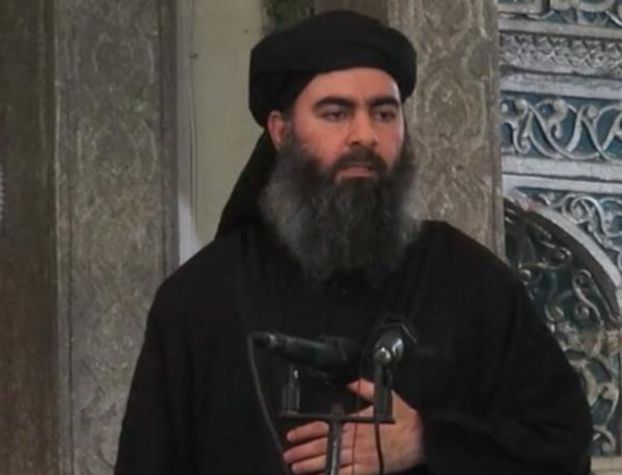Can Islamic State Survive without Baghdadi?
by Aymenn Jawad Al-Tamimi
BBC/November 10, 2014
There has been no official comment from Islamic State about the rumours of al-Baghdadi’s death.
In the wake of US-led air strikes on an Islamic State (IS) convoy near the Iraqi city of Mosul on Friday, media have been awash with rumours that IS leader Abu Bakr al-Baghdadi was killed or injured.
The apparent silence of IS sources on the issue could be evidence that something has happened to al-Baghdadi. But there was a similar lack of official IS denial of rumours that the group’s spokesman, Abu Muhammad al-Adnani, had been killed in air strikes earlier this year – something that later turned out to be unfounded.
A Twitter account purportedly belonging to Adnani has claimed Baghdadi should be on his way to a speedy recovery, but the account is almost certainly fake, as it refers to Adnani in the third person at one point. Were it real, Twitter would have deleted it some time ago, having cracked down on all traces of an official IS presence on its platform.
Regardless of the veracity of the present reports, it is of interest to assess what impact Baghdadi’s death would have on the fortunes of IS.
Baghdadi is credited with turning IS into a formidable force.
IS is heavily invested in the image of Baghdadi, who had projected himself as a caliph for a year before a caliphate was declared in June 2014.
One of the signs of this was Baghdadi’s original declaration rebranding the group as ISIS – the Islamic State in Iraq and Syria – in April 2013, an evolution from the Islamic State of Iraq (ISI).
ISIS implied an Islamic state entity whose presence in Iraq and Syria was a mere geographic accident, and subject to future expansion.
ISI, on the other hand, had implied an independent emirate that could perhaps be subsumed into the long-term global project of al-Qaeda.
Who else?
The shift from ISI to ISIS was marked with slogans such as “the promised project of the caliphate” and songs like “Close ranks and pledge allegiance to Baghdadi”.
Thus, IS’s basis for claiming to be a state and caliphate is closely tied to Baghdadi’s persona, which initially thrived on hiding behind audio messages.
Key also to Baghdadi’s legitimacy in the eyes of IS supporters is his claimed lineage from the Prophet Muhammad’s family and tribe, as well as his scholarly knowledge of religious jurisprudence.
No other figure in IS is publicly cultivated to claim the position of caliph, with credentials of education in Islamic law.
The problem for IS is to find a viable successor to Baghdadi in the event of his death. No other figure in IS is publicly cultivated to claim the position of caliph, with credentials of education in Islamic law.
In addition, the persona of Baghdadi is credited with ISI’s rise to a transnational entity that controls contiguous territory and has all the trappings of a state.
Senior figures within IS – such as members of the Shura Council, which supposedly gave legitimacy to the caliphate declaration – remain otherwise unknown.
Nothing suggests that other high-ranking IS figures, such as Adnani and field commanders Omar Shishani and Shaker Abu Waheeb, are being projected as potential successors to Baghdadi.
‘Winning horse’
Therefore, IS could find itself in disarray in the event of Baghdadi’s death if it cannot immediately achieve consensus on a successor who can live up to his legacy and command allegiance from the world’s Muslims.
Indeed, the group’s rank-and-file is by no means monolithic. Many members – particularly from likeminded jihadi groups such as Jamaat Ansar al-Islam – have pledged allegiance on the notion that IS is a “winning horse” that can project itself as a caliphate.
If that credibility disappears, the pledges of allegiance, which it should be noted are made to Baghdadi as “caliph of the Muslims”, could well vanish. Members would then revert to their original group identities, reducing Islamic State’s ranks.
Aymenn Jawad Al-Tamimi is a student at Brasenose College, Oxford University, and a Shillman-Ginsburg Fellow at the Middle East Forum.
Related Topics: Iraq, Syria | Aymenn Jawad Al-Tamimi




















